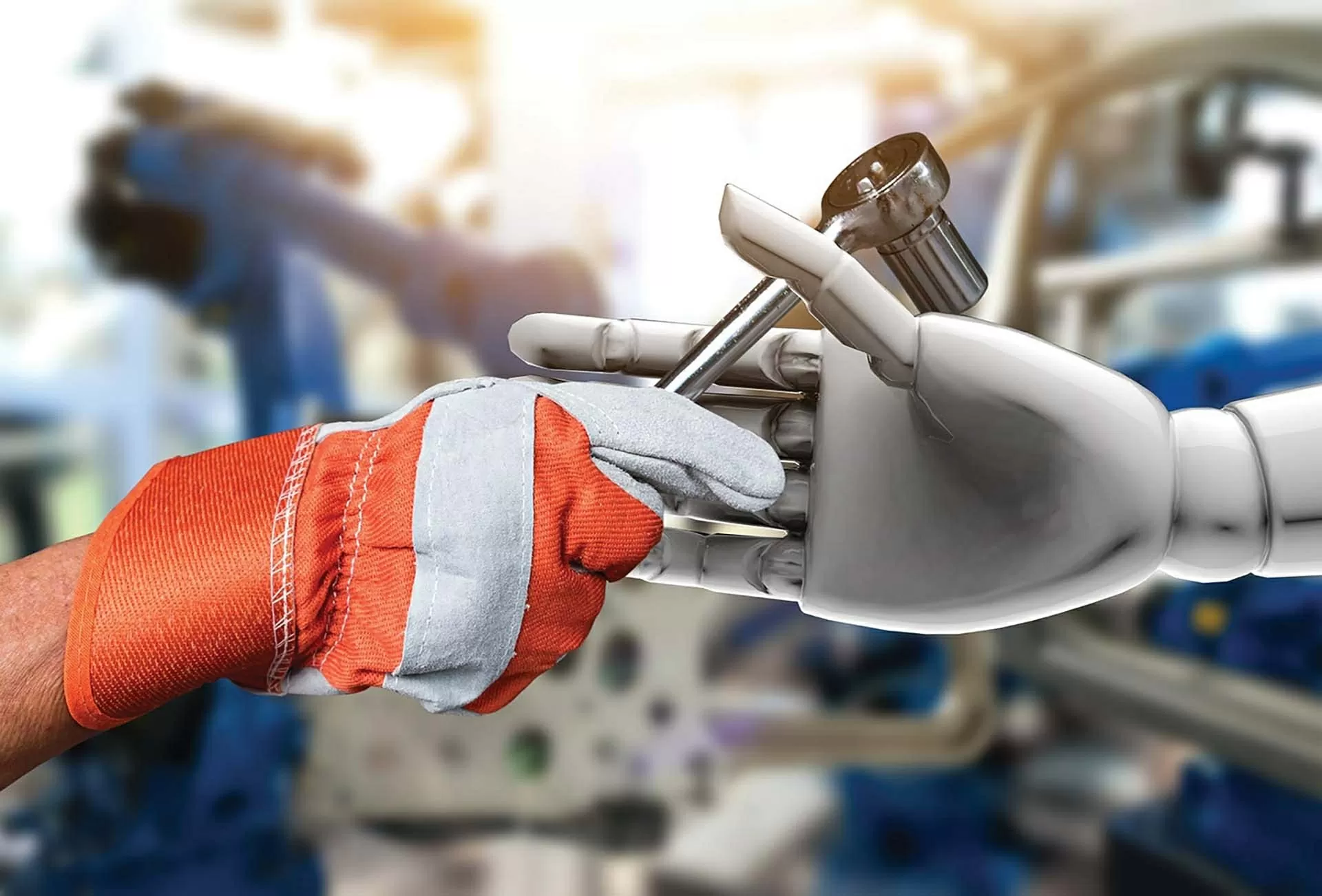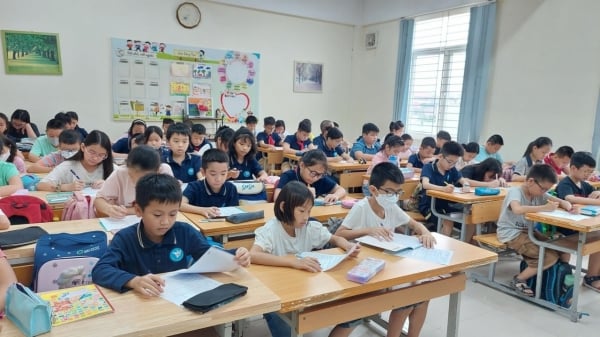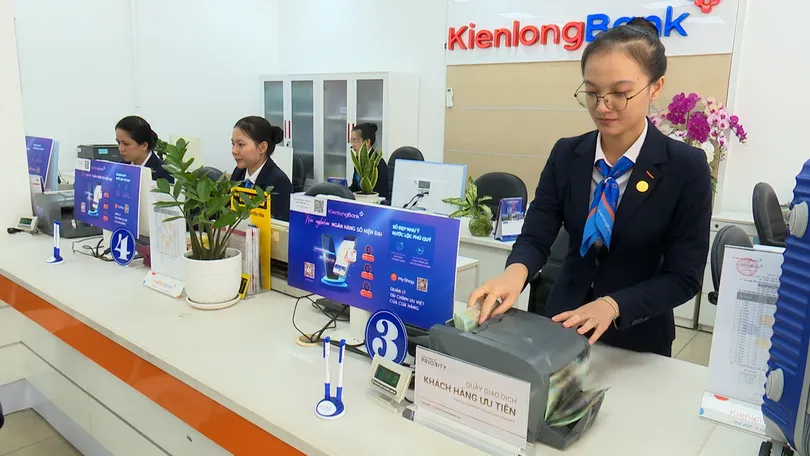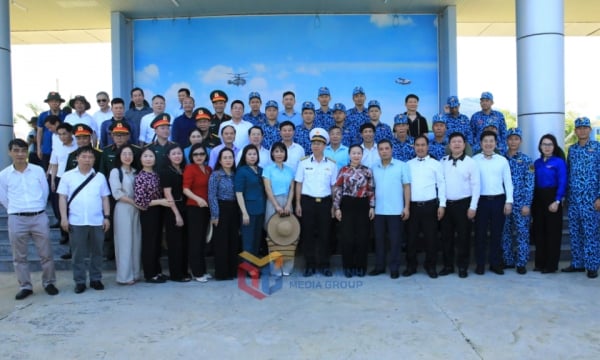Artificial intelligence (AI) increases productivity by automating tasks, optimizing processes and supporting decision-making, which can help all economic sectors grow by leaps and bounds.
 |
| As AI continues to permeate workflows across industries and its positive impact becomes increasingly apparent, individuals and organizations will seek to harness its capabilities for competitive advantage. Illustration photo. (Source: Amazon) |
Vietnam enters the digital age in 2025 with increasingly improved macroeconomic and financial indicators and balances, and a business environment that increasingly meets the world's common standards. Our country is among the top 15 countries in the world in attracting FDI, with a cumulative total of more than 40,800 active projects by early 2025, with a total registered capital of nearly 490 billion USD.
In 2024, GDP growth will reach 7.09%, among the few countries with high growth rates in the region and the world; the economic scale will be nearly 500 billion USD, ranking fourth in Southeast Asia and 34th globally; the national brand value will reach over 500 billion USD, ranking 32/193 in the world; total import-export turnover will reach over 800 billion USD, the highest ever.
The role of labor productivity
The world is entering the “dawn” of the 5.0 Industrial Revolution, integrating advanced technologies, promoting the role of robots, with automatic machines… This reality brings about a trend of global labor productivity competition based on advanced technology. In that process, no advanced technology is more important than semiconductors and AI. AI has increased productivity by automating tasks, optimizing processes and supporting decision making, which can help all economic sectors develop by leaps and bounds.
Labor productivity is a decisive resource for the competitiveness and prosperity of the economy. The history of "Contract 10" in our country nearly 40 years ago shows that the change in the agricultural mechanism has increased labor productivity and turned Vietnam from a country with insufficient food into the world's leading rice exporter. However, at present, the labor productivity index is still the biggest inadequacy in economic management. According to statistics in the ASEAN region, Vietnam's labor productivity in 2023 is only 7.6% of Singapore's level; 19.5% of Malaysia's; 37.9% of Thailand's; 45.6% of Indonesia's and 56.9% of the Philippines'; only higher than Cambodia's labor productivity (1.6 times higher). This is the biggest challenge for Vietnam's economy in the process of rising and developing...
Resolution No. 57-NQ/TW dated December 22, 2024 of the Politburo on breakthroughs in science, technology, innovation and national digital transformation clearly stated: "Focus on promoting cooperation in scientific research and technology development with countries with advanced science and technology, digital transformation development, especially in the fields of AI...".
Effective AI Mining Solutions
As AI continues to permeate workflows across industries and its positive impact becomes increasingly clear, individuals and organizations will seek to harness its capabilities for competitive advantage. However, implementing AI requires careful planning and a structured approach to avoid common pitfalls and achieve sustainable results. From support chatbots like ChatGPT to robots to predictive analytics, AI is ever-changing. There is no one-size-fits-all solution, but we can identify appropriate approaches.
According to digital technology experts, for the AI industry to develop strongly and sustainably, there need to be positive solutions at both the Government and business levels:
Government Level
Developing AI ecosystems in localities by promoting the information technology industry, supporting domestic AI companies and strengthening cooperation with leading technology corporations such as OpenAI, Google, Meta, Nvidia, Deepseek, etc. At the same time, promoting the application of AI in state administration to improve the efficiency of using economic resources, avoiding waste and negativity. In the immediate future, it is necessary to optimize the management of social resources (including institutions and macro-management environment, etc.), streamline the apparatus and promote linkages between the AI and semiconductor industries and key economic sectors.
Developing digital infrastructure platforms (robust broadband, data storage and digital capabilities) and developing AI workforce skills (from basic digital literacy to advanced AI research and ensuring new skills are integrated into school curricula and professional training).
Foster a culture of AI innovation to encourage society to embrace change, explore new ideas, and actively participate in AI applications. Leadership encourages innovation, which can be supported by communicating a clear vision of the role of AI. By adopting a culture of innovation, we can build a quality, adaptive, and AI-ready workforce in the future.
Develop AI governance frameworks to manage risks and build responsible ethical frameworks, including principles such as fairness, transparency, and accountability.
 |
Enterprise Level
Defining goals is the foundation of successful AI implementation
The first step is to identify the problems or opportunities that digital transformation can address. Companies can then translate these problems into goals. A structured, purposeful approach will ensure that AI initiatives are focused, with clear endpoints for measurement, and that AI model deployments are aligned with business goals.
Assess data quality and choose the right AI technology
Assessing the quality and accessibility of input data is an important first step in any AI implementation process. First, data quality must be assessed based on a number of criteria, including accuracy, completeness, consistency, and relevance to the business problem. Additionally, data must be representative of the real-world scenarios that the AI model will encounter to avoid biased or limited predictions. Furthermore, AI systems must be able to access the data appropriately.
Next, businesses must determine the type of architecture and modeling approach that best fits their AI strategy. In addition to model selection, organizations must also consider the infrastructure and platforms that will support the AI system.
Building an AI-Proficient Team (Team Work)
A skilled team can handle the complexity of AI development, deployment, and maintenance. The team should include a range of specialized roles, such as data scientists, hardware engineers, and software developers, each with expertise in their own areas. An AI-savvy team not only enhances good execution, but also coordinates the internal capacity building for continuous AI innovation and adaptation.
Testing and evaluating models
This helps ensure that the model is accurate, reliable, and capable of delivering value in real-world scenarios. Real-world environments are dynamic, with changing data patterns and business needs that can impact the performance of the model. A combination of thorough testing and consistent evaluation safeguards AI deployments, ensuring that the system is both responsive to business needs and responsive to change.
Plan for scalability and continuous improvement
This is essential to the success of an AI project, as it allows the system to handle increasing volumes of data, users, or processes without compromising performance. When planning for scalability, organizations should choose an infrastructure and framework that can support expansion, whether through cloud services, distributed computing, or modular architecture…
In short, AI will play a central role in a volatile world, both cooperative and competitive, as it is the source of leverage for the development of competitiveness among the world's economies on the threshold of the 5.0 industrial revolution. In which, the economy will operate based on increased cooperation between humans and machines. By working together with "robot colleagues", people and institutional organizations can focus on innovation and experimentation, thereby maximizing their potential on the foundation of industry 4.0 and industry 5.0, aiming to help the country become more flexible, more productive and ultimately truly make Vietnam famous.
Source: https://baoquocte.vn/nguon-luc-tang-nang-suat-lao-dong-trong-thoi-dai-ai-309052.html





![[Photo] Closing of the 11th Conference of the 13th Central Committee of the Communist Party of Vietnam](https://vstatic.vietnam.vn/vietnam/resource/IMAGE/2025/4/12/114b57fe6e9b4814a5ddfacf6dfe5b7f)

![[Photo] Overcoming all difficulties, speeding up construction progress of Hoa Binh Hydropower Plant Expansion Project](https://vstatic.vietnam.vn/vietnam/resource/IMAGE/2025/4/12/bff04b551e98484c84d74c8faa3526e0)

















































































Comment (0)